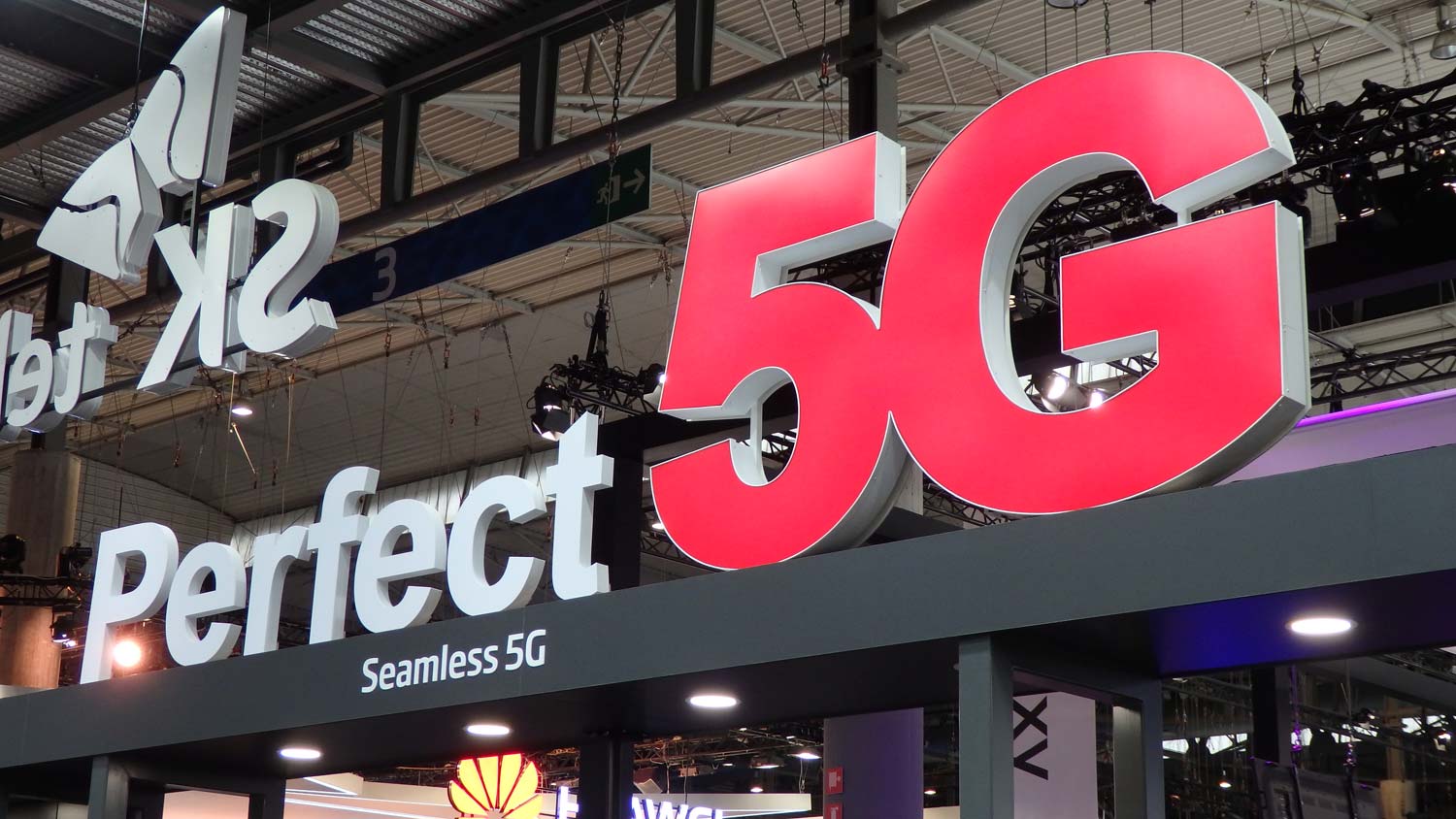5G Smartphone Status Update: 2019 Is the Year
With the biggest players in wireless communications detailing the next steps in their 5G rollout during Mobile World Congress, we learned the first 5G-capable device won't be a smartphone.
Smartphones ruled last month's Mobile World Congress, from Samsung's premium Galaxy S9 and S9+ and Sony's flagship Xperia XZ 2 to a slew of Nokia handsets, including the classic "banana phone." But the real excitement at the mobile-focused show centered around 5G, the next generation of wireless connectivity. Unfortunately, we'll have to wait until next year's MWC to see a 5G-ready smartphone.

Phone manufacturers, chipset makers, wireless carriers and infrastructure developers have been planning for 5G for years, and the biggest players gathered in Barcelona, Spain, at the end of February to detail what's next in the rollout of 5G. Signage trumpeting 5G dotted the Fira Gran Via show floor, and we saw demonstrations at various companies' booths of what a future with 5G connectivity will look like. But none of the announcements we heard mean much for consumers — at least not yet.
Phase One: Infrastructure
Before mobile hotspots and smartphones can take advantage of the features made possible by 5G speeds, companies have to lay down the physical infrastructure by attaching 5G new radios to existing cell towers or building towers from the ground up.
MORE: The Truth About 5G: What's Coming (and What's Not) in 2018
"It'll be 2020 before you'll start to see a real leap in performance with 5G, because it takes time to build," T-Mobile Chief Technology Officer Neville Ray said during an interview at MWC. "If we're honest with ourselves, we're only getting our hands on radio equipment to put on these cell sites this year. To believe we can deploy these things across massive geography in the U.S. in a very short period of time is unrealistic. But we're very committed to making it happen."
At MWC, T-Mobile announced that it will start deploying millimeter-wave and 600-GHz equipment in 30 cities across the U.S., beginning in New York City, Los Angeles, Dallas and Las Vegas.
| Carrier | Initial Number of 5G Markets | Sample Cities | Timeline |
| AT&T | 12 | Atlanta, Dallas, Waco | Launching mobile hotspot by end of 2018 |
| Sprint | 6 | Atlanta, Chicago, Dallas, Los Angeles | First half of 2019 |
| T-Mobile | 30 | Dallas, Las Vegas, New York, Los Angeles | Laying down equipment throughout 2018 |
| Verizon | 5 | Sacramento | Fixed wireless coming later this year |
Sprint also used MWC to announce its 2018 infrastructure plans. The wireless carrier is rolling out massive MIMO technology, or the use of multiple transmit-and-receive antennas at base stations to increase capacity, in Atlanta, Chicago, Dallas, Houston, L.A. and Washington, D.C. That expansion will make LTE faster in the first half of 2019 but is also future-proofed for 5G's rollout. Shaw said Sprint will add massive MIMO antennas to existing cell towers and split the Ericsson radios in two: one half dedicated to LTE, and the other half to 5G.
Get instant access to breaking news, the hottest reviews, great deals and helpful tips.
"It'll be 2020 before you'll start to see a real leap in performance with 5G, because it takes time to build." — Neville Ray, T-Mobile
If you splurge on a flagship smartphone this year, you won't be able to connect to a 5G network. But the good news is, that because 5G and 4G are compatible (unlike 3G and 4G), you'll still see faster LTE speeds once 5G comes online even if your phone doesn't support the new standard.
"In the initial rollout of 5G, you're going to see improvements in speed and latency, but LTE will not be a lacking technology," said Chris Pearson, president of the 5G Americas trade group. "It'll be a robust technology for a long time."
5G Smartphones Coming in 2019
"By this time next year, I'm confident smartphones will be talked about," T-Mobile's Ray said. "That will excite consumers. Finally they'll be able to touch a device."
The smartphones we saw at this year's show didn't have 5G radios inside, because the 5G standard isn't complete yet. (In fact, Qualcomm only recently announced a 5G modem, along with the dozen or so device makers who've publicly committed to including it on their devices.) The non-standalone specification, the part that works with LTE, was finalized last December. The standalone specification will be agreed upon this summer. In the meantime, chipset makers and network operators are conducting field trials to make sure every 5G component works together out in the wild, now that lab tests are complete.
Instead of smartphones, wireless carriers are working on mobile hotspots, which will be the first 5G-capable devices people can buy and use at home. AT&T has already announced that a wireless puck would be the first device it will offer in the 12 markets where it plans to roll out 5G service later this year. AT&T said the first three 5G markets are Dallas, Atlanta and Waco, Texas.
"Getting the handsets at scale penetrated into the market will slow things down," AT&T CEO Randall Stephenson said during the company's Jan. 31 earnings call. "So that's why we're going to be deploying pucks in the first part of our deployments in these 12 markets. So it is a mobile solution but it's not going to be a handset just because there aren't going to be that many handsets available."
"AT&T is rolling out 5G with a puck. We're gonna roll out a 5G network with a smartphone." — John Saw, Sprint
Verizon is also rumored to be considering the launch of a mobile hotspot device. The company is bringing wireless 5G connectivity to homes in Sacramento, California, and four additional markets later this year.
Don't expect a hotspot from Sprint, CTO John Saw said.
"AT&T is rolling out 5G with a puck. We're gonna roll out a 5G network with a smartphone," Saw said during a briefing at MWC. "It'll have dual connect capabilities to connect to LTE and 5G. Customers with a 5G phone will be able to do 8K video, augmented reality and virtual reality."
That's a bold prediction. Mark your calendars: One year from now, we'll find out what 5G phones will actually be capable of.
Editor's note: This story has been updated to correct the spelling of Sprint CTO John Saw's last name.
Caitlin is a Senior editor for Gizmodo. She has also worked on Tom's Guide, Macworld, PCWorld and the Las Vegas Review-Journal. When she's not testing out the latest devices, you can find her running around the streets of Los Angeles, putting in morning miles or searching for the best tacos.
